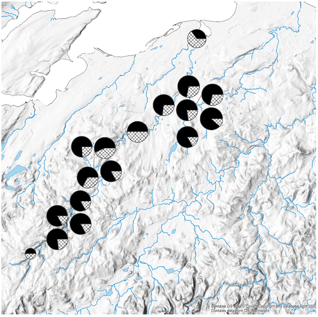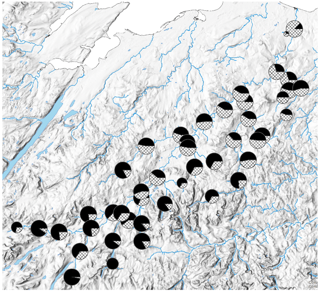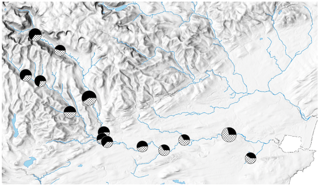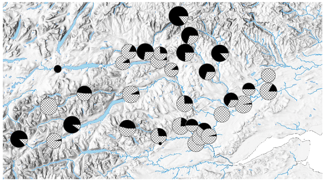Juvenile Atlantic salmon - mapping the early running component: report
This Scottish Marine and Freshwater Science report describes the application of a genetic tool to estimate the early running component of juvenile Atlantic salmon. The proportions were mapped to visualise within and between-river patterns. These maps can be used to inform and help river managers achieve their conservation aims.
Results
Of the 6,183 juveniles sampled and screened, 209 (3.4%) failed QC, resulting in a final dataset of 5,974 juveniles. Figures 2 – 10 show, per river, the proportion of early and later running components for each site, based on the cut off value.









Contact
Email: Eef.Cauwelier@gov.scot
There is a problem
Thanks for your feedback